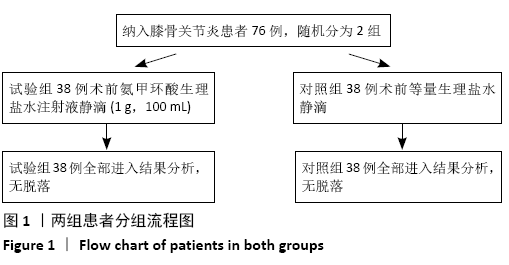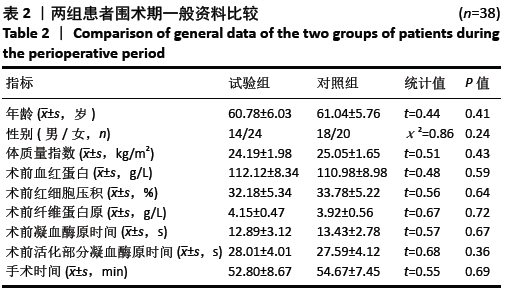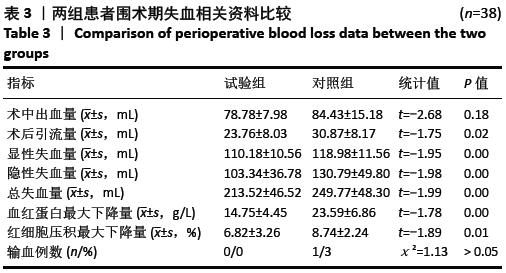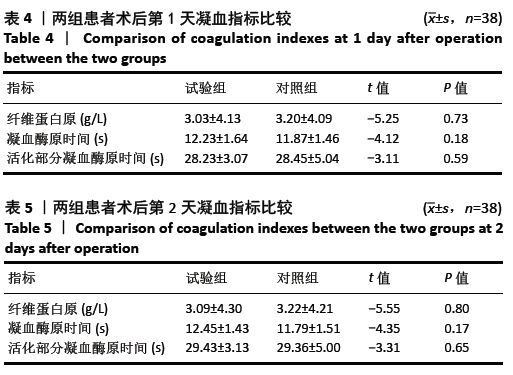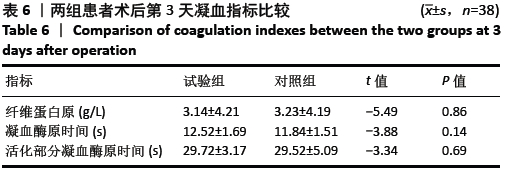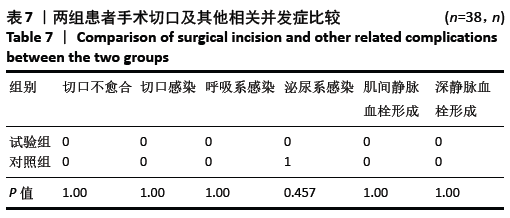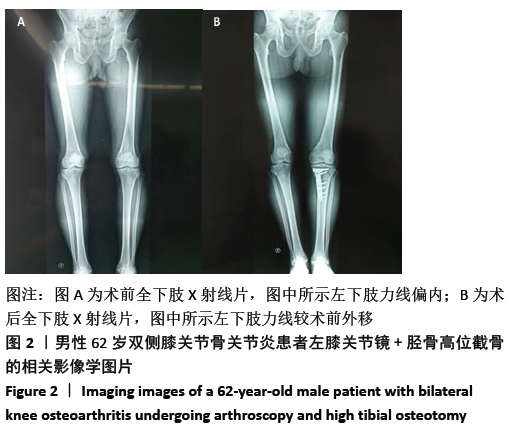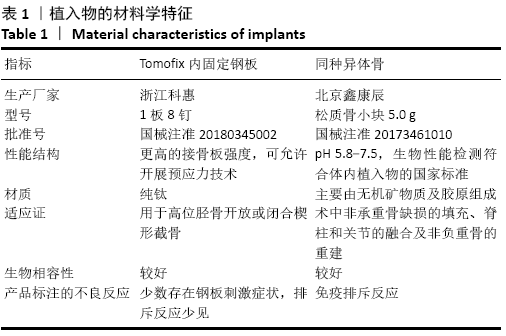中国组织工程研究 ›› 2021, Vol. 25 ›› Issue (12): 1847-1852.doi: 10.3969/j.issn.2095-4344.3786
• 人工假体 artificial prosthesis • 上一篇 下一篇
应用氨甲环酸减少胫骨高位截骨围术期失血量的安全性评价
马 振,梁 答,吴晓林,钟 伟
- 潍坊医学院附属医院关节外一科/矫形骨科,山东省潍坊市 261000
Safety evaluation of tranexamic acid in reducing perioperative blood loss in high tibial osteotomy
Ma Zhen, Liang Da, Wu Xiaolin, Zhong Wei
- First Department of Joint Surgery/Department of Orthopedics, Affiliated Hospital of Weifang Medical University, Weifang 261000, Shandong Province, China
摘要:

文题释义:
胫骨高位截骨:膝关节骨关节炎常可伴有膝内翻或膝外翻畸形,并产生关节内持重应力分布的改变,通过在胫骨结节以上或以下部位截骨纠正膝关节内翻或外翻畸形的手术方式,称为胫骨高位截骨,1963年由JACKSONT和WAUGH提出。
氨甲环酸:化学名称为对氨甲基环己烷甲酸、反式-4-氨甲基-环己烷甲酸,主要用于急性或慢性、局限性或全身性纤维蛋白溶解亢进所致的各种出血。临床上主要用于前列腺、尿道、肺、脑、子宫、肾上腺、甲状腺、肝等富有纤溶酶原激活物脏器的创伤或手术出血。
背景:氨甲环酸因在骨科手术中良好的止血效果得到广泛应用,在髋膝关节置换中的应用最为成熟,但对于胫骨高位截骨围术期失血量及下肢深静脉血栓形成风险的影响尚未知。
目的:探讨氨甲环酸对胫骨高位截骨围术期失血量及下肢深静脉血栓形成风险的影响。
方法:选择2017年6月至2019年12月在潍坊医学院附属医院关节外一科行胫骨高位截骨术的膝骨关节炎患者76例,随机分2组,每组38例。试验组术前30 min予氨甲环酸生理盐水注射液(1 g,100 mL)静脉滴注,对照组予等量生理盐水静脉滴注。记录两组患者围术期一般资料如年龄、性别比例、体质量指数、血红蛋白、红细胞压积、纤维蛋白原、凝血酶原时间、活化部分凝血酶原时间。两组患者均由同一组医师完成手术,内固定物采用同一公司生产的器械,记录患者手术时间、术中出血量及术后引流量、输血情况、术后第1,3,5天的血红蛋白及红细胞压积、术后第3天凝血指标及术后第5天下肢静脉血栓形成情况,计算患者总失血量、隐性出血量及显性出血量。
结果与结论:①两组患者术前一般资料比较差异无显著性意义(P > 0.05);两组手术时间差异无显著性意义(P > 0.05);②试验组总失血量、隐性失血量、显性失血量、术后引流量均少于对照组,差异有显著性意义(P < 0.05);术中出血量组间比较差异无显著性意义(P > 0.05);两组术后血红蛋白最大下降量、术后红细胞压积最大下降量比较差异均有显著性意义(P < 0.05);③对照组中1例行输血治疗,占3%;试验组无输血治疗,两组相比差异无显著性意义(P > 0.05);④两组患者术后第1,2,3天复查纤维蛋白原、活化部分凝血酶原时间、凝血酶原时间差异无显著性意义(P > 0.05);⑤对照组胫骨高位截骨术后出现1例泌尿系感染,未见其他明显并发症发生;术后第5天复查双下肢静脉彩超,两组均无下肢深静脉血栓形成(P > 0.05);⑥提示膝骨关节炎患者胫骨高位截骨术前静脉应用氨甲环酸可减少围术期总失血量,尤其是隐性失血量,而且不会增加双下肢深静脉血栓形成的风险
https://orcid.org/0000-0003-0947-8572 (马振)
中国组织工程研究杂志出版内容重点:人工关节;骨植入物;脊柱;骨折;内固定;数字化骨科;组织工程
中图分类号:
